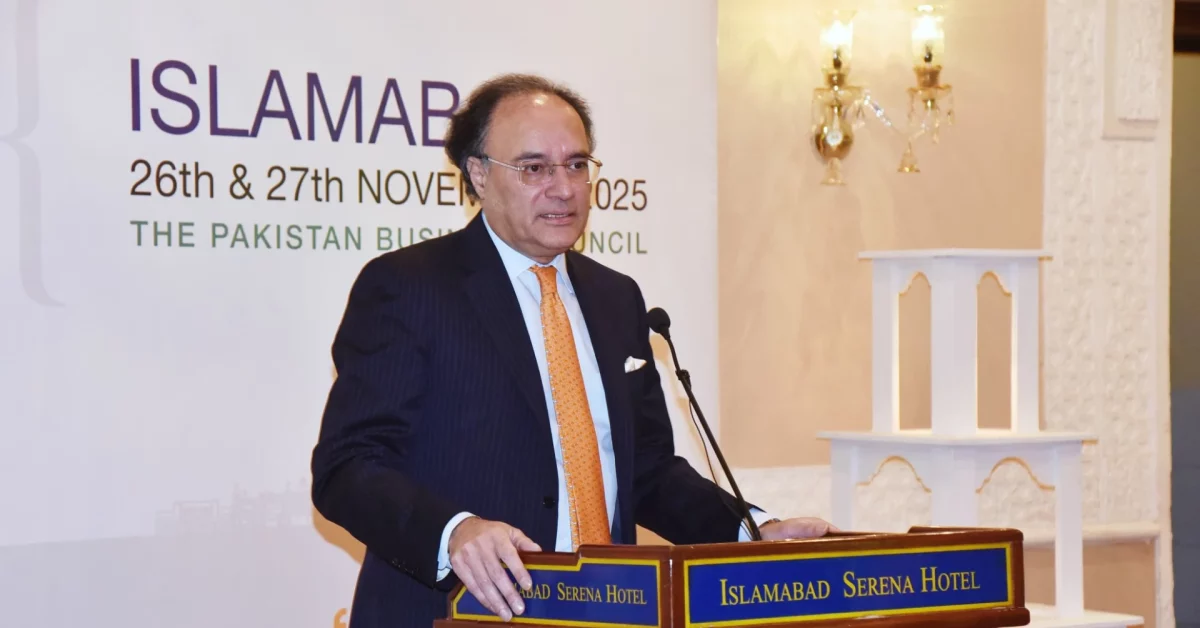
How to buy stocks in Pakistan in 2025 (PSX for beginners)
November 27, 2025
Punjab Bans Petrol Rickshaws, Home Washing Amid Smog
November 28, 2025According to Finance Minister Muhammad Aurangzeb, the government would now prioritize export-led development, structural reforms, and sustained growth over short-term GDP surges. The new strategy aims to stop frequent boom-and-bust cycles by promoting industry, moving financing away from bank borrowing, and encouraging long-term investment over short-term repairs. Observers believe that Pakistan’s economic trajectory might be reset if changes are carried out consistently and predictably.
Read more: Aurangzeb Promotes Pakistan’s Investment Potential in Washington
Speaking at an economic seminar organized by the Pakistan Business Council (PBC), Aurangzeb stressed that chasing 5–6% growth spurts has often led to instability and failed to achieve inclusive prosperity. Instead, he presented a plan cantered on sustainable growth, with a modest target of 3.5% GDP growth for the current fiscal year and 4-6% in the medium term, contingent upon momentum in manufacturing, services, and agriculture.
In the near future, the administration plans to enact an industrial policy that will prioritize domestic manufacturing, export-led growth, and value-added output. Aurangzeb encouraged businesses in Pakistan to use capital markets for long-term finance instead of traditional bank loans in an effort to boost financial markets and encourage long-term investment.
He addressed structural issues by announcing the creation of a tax advisory board to consult with companies before to the next budget and confirming that reforms in the energy and taxation sectors are in progress. He also hinted at increased openness to both domestic and foreign investment, citing a resurgence of interest from international mining, energy, and technology companies. If these reforms hold, Pakistan may finally trade volatility for a growth model built on resilience, clarity, and long-term confidence.






